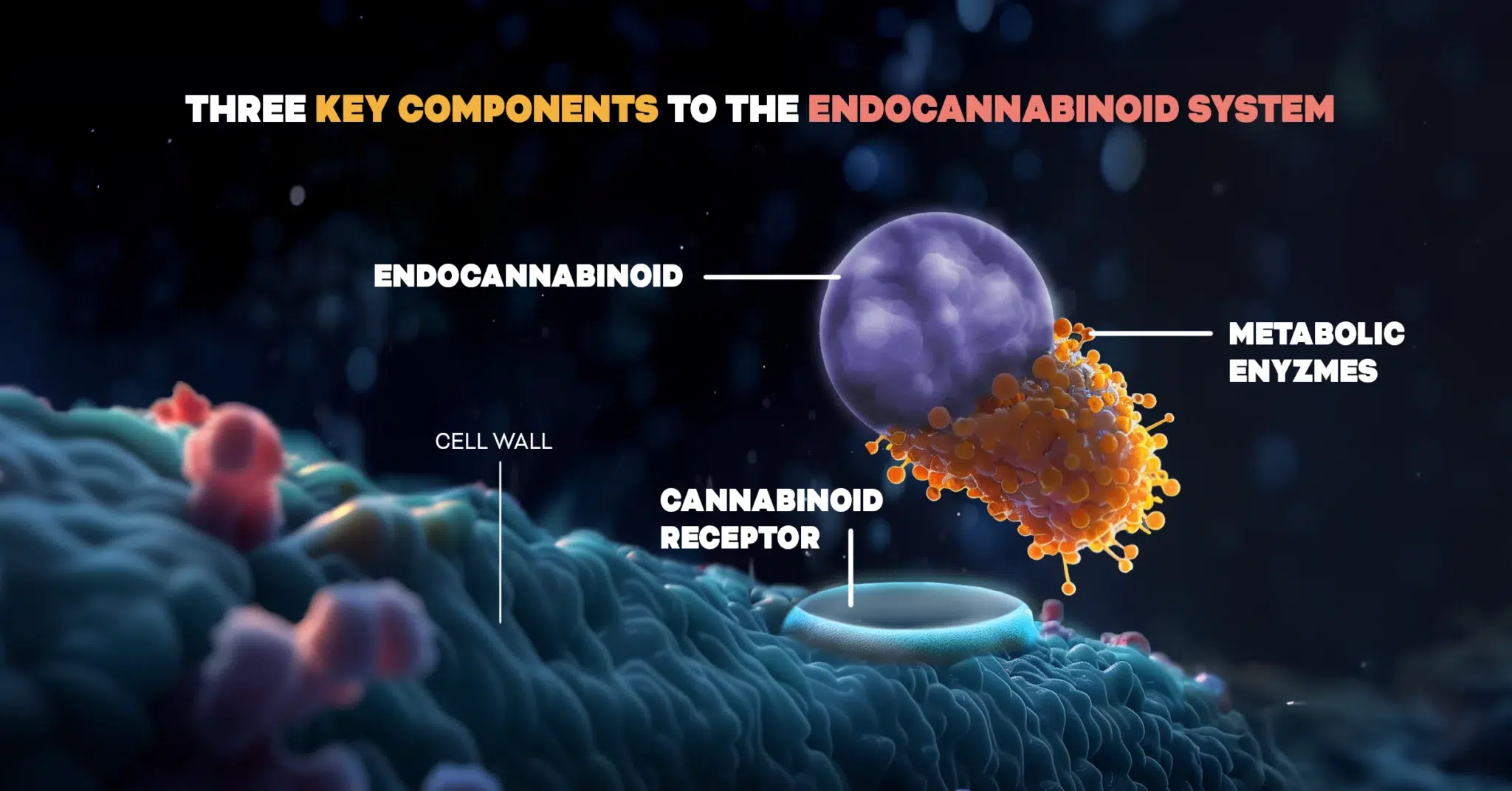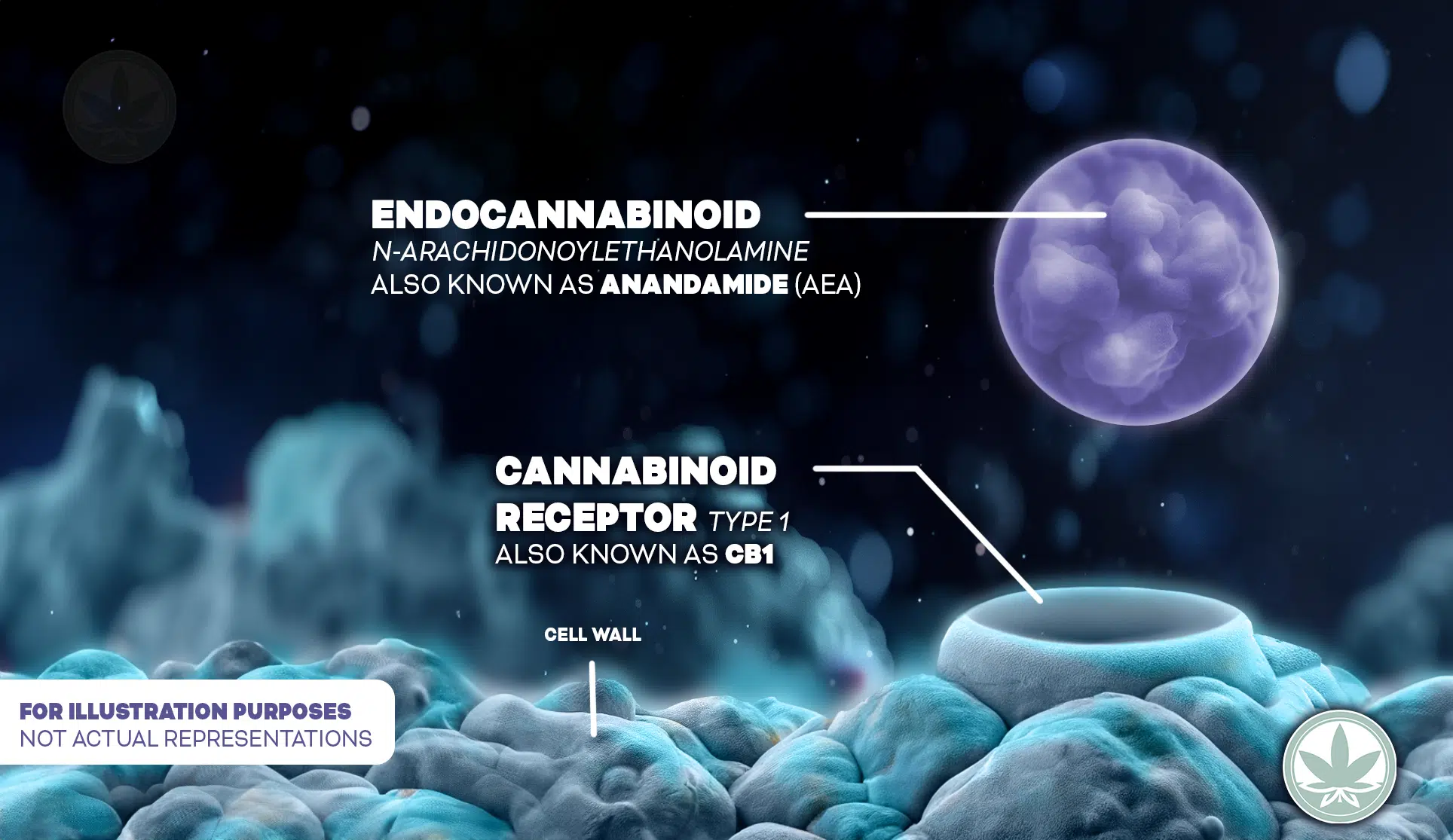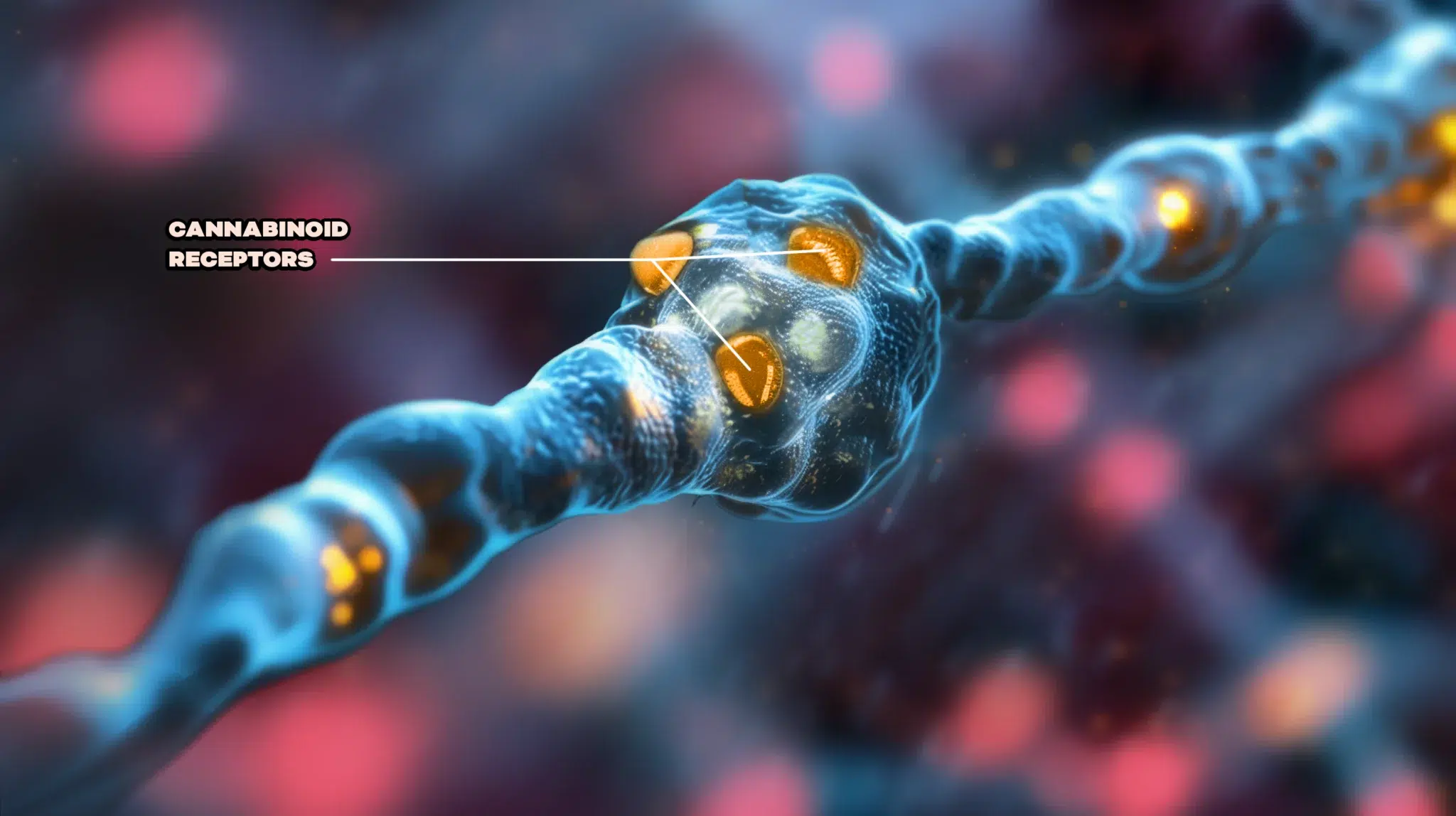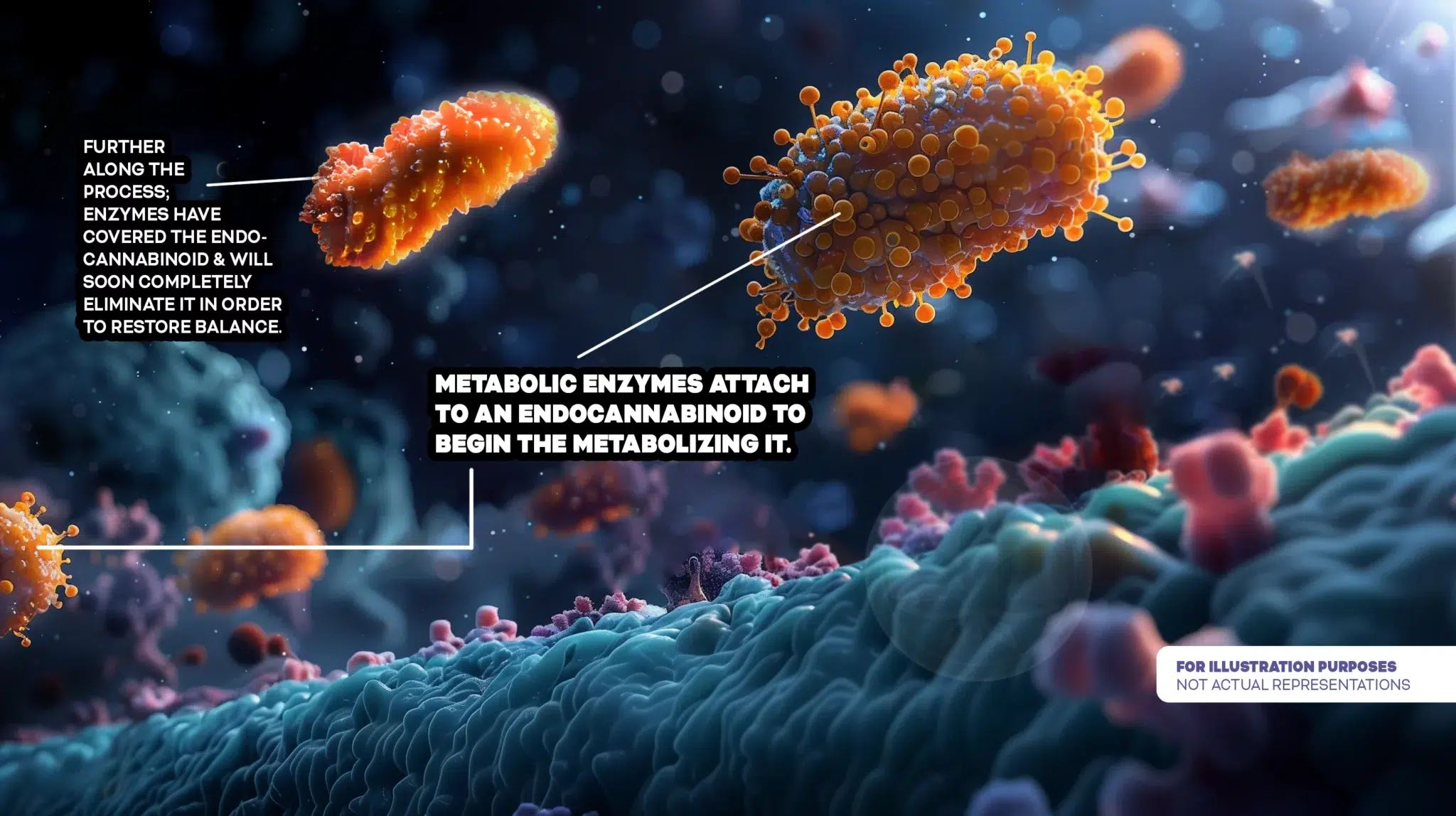The Three Components Of The ECS


Christopher Visser
Multi-Cannabis Business Owner
Christopher Visser, the Founder and CEO of Cannabidiol Life and THCGummies.com, is a distinguished figure in the CBD industry, recognized for his pioneering contributions since 2016. With over 120 published articles, Christopher has become a reputable cannabis researcher, writer, and author. He's built two prosperous cannabis ventures that collectively generated millions in annual sales. His in-depth analysis of numerous cannabis studies, collaboration with medical professionals, and personal engagement with thousands of customers underline his expertise and commitment to advancing cannabis understanding daily.
-
 Written By:
Christopher Visser
Written By:
Christopher Visser
- Published:
- Updated: March 25, 2024
- Too Quiet, Light Up The Convo!
The three lesser-known guardians of internal balance tirelessly toil in the shadows of our biology. These are the key parts of the Endocannabinoid System (ECS): ENDOCANNABINOIDS (messengers), CANNABINOID RECEPTORS (message receivers/deliverers), and METABOLIC ENZYMES (cannabinoid clean up crew).
The harmonious interplay of these three components give us profound insights into human health and homeostasis.
Table of Contents
- Tags: ECS, Endogenous
POP QUIZ!
What are the three key parts that make up the Endocannabinoid System?
A) Anandamide, Lipid Proteins, Metabolic EnzymesB) Neurotransmitters, Synapses, Cannabinoids
C) Endocannabinoids, Cannabinoid Receptors, Metabolic Enzymes
D) Endocannabinoids, CB1 Receptors, CB2 Receptors
Correct Answer: C
|Endocannabinoids, Cannabinoid Receptors, and Metabolic Enzymes are the three pivotal components of the ECS. Endocannabinoids are molecules that bind to and activate cannabinoid receptors; they are akin to the keys that unlock the receptors' functions. Cannabinoid Receptors, primarily CB1 and CB2, are the locks into which endocannabinoids fit, initiating various biological responses. Metabolic Enzymes ensure the ECS maintains balance by breaking down endocannabinoids once they've fulfilled their role. Together, these components work synergistically to regulate and maintain the body’s homeostasis.
Today, you’ll learn about the three main components of the Endocannabinoid System; covering the following four points for each:
- The scientific definition
- A detailed and more comprehensive explanation
- The roles & responsibilities
- The main types
Backed by tremendous research for every discussion point, you will find a supporting research study for verification.
#1. Endocannabinoids:
- Scientific definition: Endocannabinoids are endogenous lipid-based retrograde neurotransmitters that bind to cannabinoid receptors [1].
- Comprehensive Explanation: Endocannabinoids are naturally occurring molecules produced by the body that activate the same receptors as the active components in cannabis (cannabinoids). They are part of a complex cell-signaling system known as the endocannabinoid system, which helps regulate various physiological processes [2].

Roles and responsibilities:
- Modulating neurotransmitter release [3]
- Regulating pain, inflammation, and immune responses [4]
- Influencing appetite, mood, and memory [5]
- Maintaining homeostasis in the body [6]
Two Main Endocannabinoids In The ECS
The two main endocannabinoids are:
- anandamide (AEA)
- 2-arachidonoylglycerol (2-AG) [7].
#2 Cannabinoid Receptors:
- Scientific definition: Cannabinoid receptors are G protein-coupled receptors that are activated by endocannabinoids and exogenous cannabinoids [8].
- Comprehensive Explanation: Cannabinoid receptors are cell membrane receptors that bind to endocannabinoids and cannabinoids, triggering various cellular responses. They are found throughout the body, particularly in the central and peripheral nervous systems, as well as in immune cells [9].

Two Main Cannabinoid Receptors In The ECS
The two main types of cannabinoid receptors are CB1 and CB2 receptors [14].
#3. Metabolic Enzymes:
- Scientific definition: Metabolic enzymes are proteins that catalyze the synthesis, transport, and degradation of endocannabinoids [15].
- Comprehensive definition: Metabolic enzymes are responsible for the production, movement, and breakdown of endocannabinoids within the endocannabinoid system. They help maintain the balance of endocannabinoids in the body and ensure that they are available when needed and removed when their function is complete [16].

Four Main Metabolic Enzymes In The ECS
The main metabolic enzymes involved in the ECS are:
Summary & Final Thoughts
These three components work together to form the endocannabinoid system, which plays a crucial role in maintaining homeostasis and regulating various physiological processes in the body [25].
References
- Mechoulam, R., & Parker, L. A. (2013). The endocannabinoid system and the brain. Annual review of psychology, 64, 21-47. https://doi.org/10.1146/annurev-psych-113011-143739
- Lu, H. C., & Mackie, K. (2016). An introduction to the endogenous cannabinoid system. Biological psychiatry, 79(7), 516-525. https://doi.org/10.1016/j.biopsych.2015.07.028
- Kano, M., Ohno-Shosaku, T., Hashimotodani, Y., Uchigashima, M., & Watanabe, M. (2009). Endocannabinoid-mediated control of synaptic transmission. Physiological reviews, 89(1), 309-380. https://doi.org/10.1152/physrev.00019.2008
- Witkamp, R. (2018). The endocannabinoid system and inflammation: potential for therapeutic intervention. Current Pharmaceutical Design, 24(21), 2413-2421. https://doi.org/10.2174/1381612824666180703161325
- Mechoulam, R., & Parker, L. A. (2013). The endocannabinoid system and the brain. Annual review of psychology, 64, 21-47. https://doi.org/10.1146/annurev-psych-113011-143739
- Di Marzo, V. (2018). New approaches and challenges to targeting the endocannabinoid system. Nature reviews Drug discovery, 17(9), 623-639. https://doi.org/10.1038/nrd.2018.115
- Marzo, V. D., Bifulco, M., & Petrocellis, L. D. (2004). The endocannabinoid system and its therapeutic exploitation. Nature reviews Drug discovery, 3(9), 771-784. https://doi.org/10.1038/nrd1495
- Pertwee, R. G. (2008). The diverse CB1 and CB2 receptor pharmacology of three plant cannabinoids: Δ9‐tetrahydrocannabinol, cannabidiol and Δ9‐tetrahydrocannabivarin. British journal of pharmacology, 153(2), 199-215. https://doi.org/10.1038/sj.bjp.0707442
- Mackie, K. (2008). Cannabinoid receptors: where they are and what they do. Journal of neuroendocrinology, 20(s1), 10-14. https://doi.org/10.1111/j.1365-2826.2008.01671.x
- Howlett, A. C., Barth, F., Bonner, T. I., Cabral, G., Casellas, P., Devane, W. A., … & Pertwee, R. G. (2002). International Union of Pharmacology. XXVII. Classification of cannabinoid receptors. Pharmacological reviews, 54(2), 161-202. https://doi.org/10.1124/pr.54.2.161
- Castillo, P. E., Younts, T. J., Chávez, A. E., & Hashimotodani, Y. (2012). Endocannabinoid signaling and synaptic function. Neuron, 76(1), 70-81. https://doi.org/10.1016/j.neuron.2012.09.020
- Pertwee, R. G. (2001). Cannabinoid receptors and pain. Progress in neurobiology, 63(5), 569-611. https://doi.org/10.1016/S0301-0082(00)00063-5
- Zanettini, C., Panlilio, L. V., Alicki, M., Goldberg, S. R., Haller, J., & Yasar, S. (2011). Effects of endocannabinoid system modulation on cognitive and emotional behavior. Frontiers in behavioral neuroscience, 5, 57. https://doi.org/10.3389/fnbeh.2011.00057
- Pertwee, R. G. (2006). The pharmacology of cannabinoid receptors and their ligands: an overview. International journal of obesity, 30(1), S13-S18. https://doi.org/10.1038/sj.ijo.0803272
- Ahn, K., McKinney, M. K., & Cravatt, B. F. (2008). Enzymatic pathways that regulate endocannabinoid signaling in the nervous system. Chemical reviews, 108(5), 1687-1707. https://doi.org/10.1021/cr0782067
- Fezza, F., Bari, M., Florio, R., Talamonti, E., Feole, M., & Maccarrone, M. (2014). Endocannabinoids, related compounds and their metabolic routes. Molecules, 19(11), 17078-17106. https://doi.org/10.3390/molecules191117078
- Tsuboi, K., Uyama, T., Okamoto, Y., & Ueda, N. (2018). Endocannabinoids and related N-acylethanolamines: biological activities and metabolism. Inflammation and regeneration, 38(1), 1-10. https://doi.org/10.1186/s41232-018-0086-5
- Chicca, A., Marazzi, J., Nicolussi, S., & Gertsch, J. (2012). Evidence for bidirectional endocannabinoid transport across cell membranes. Journal of Biological Chemistry, 287(41), 34660-34682. https://doi.org/10.1074/jbc.M112.374124
- Lodola, A., Castelli, R., Mor, M., & Rivara, S. (2015). Fatty acid amide hydrolase inhibitors: a patent review (2009-2014). Expert opinion on therapeutic patents, 25(11), 1247-1266. https://doi.org/10.1517/13543776.2015.1067683
- Savinainen, J. R., Saario, S. M., & Laitinen, J. T. (2012). The serine hydrolases MAGL, ABHD6 and ABHD12 as guardians of 2‐arachidonoylglycerol signalling through cannabinoid receptors. Acta physiologica, 204(2), 267-276. https://doi.org/10.1111/j.1748-1716.2011.02280.x
- Cravatt, B. F., Giang, D. K., Mayfield, S. P., Boger, D. L., Lerner, R. A., & Gilula, N. B. (1996). Molecular characterization of an enzyme that degrades neuromodulatory fatty-acid amides. Nature, 384(6604), 83-87. https://doi.org/10.1038/384083a0
- Dinh, T. P., Carpenter, D., Leslie, F. M., Freund, T. F., Katona, I., Sensi, S. L., … & Piomelli, D. (2002). Brain monoglyceride lipase participating in endocannabinoid inactivation.Proceedings of the National Academy of Sciences, 99(16), 10819-10824. https://doi.org/10.1073/pnas.152334899
- Okamoto, Y., Morishita, J., Tsuboi, K., Tonai, T., & Ueda, N. (2004). Molecular characterization of a phospholipase D generating anandamide and its congeners. Journal of Biological Chemistry, 279(7), 5298-5305. https://doi.org/10.1074/jbc.M306642200
- Bisogno, T., Howell, F., Williams, G., Minassi, A., Cascio, M. G., Ligresti, A., … & Doherty, P. (2003). Cloning of the first sn1-DAG lipases points to the spatial and temporal regulation of endocannabinoid signaling in the brain. The Journal of cell biology, 163(3), 463-468. https://doi.org/10.1083/jcb.200305129
- Lu, H. C., & Mackie, K. (2016). An introduction to the endogenous cannabinoid system. Biological psychiatry, 79(7), 516-525. https://doi.org/10.1016/j.biopsych.2015.07.028

If this article sparked a new insight, pass the flame…
LET’S IGNITE RIPPLES OF CANNABIS WISDOM.
Be the catalyst for someone’s breakthrough moment.
SHARE ON SOCIAL MEDIA

YOUR CANNABIS EDIBLE
JOURNEY CONTINUES:
Looking For Something Else?



